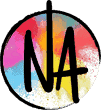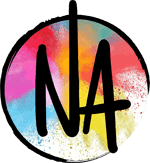At NAMA, we’re quite proud that we’re plain talking. Our clients know what to expect from us, and we break down all their marketing statistics into easily readable and understandable documents for them to digest. We do this because we want our clients to understand what they receive for their money. Of course, we could send emails full of jargon and industry-specific language, but if they don’t understand what they’re reading, we figure they won’t be our clients for very long. And that’s why you should be writing in plain language too.
So, what is plain language, and why should you include it in your content?
The average adult reading age in the UK is 9. To put that into perspective, the reading age of The Guardian is 14, and the reading age of The Sun is 8. The leading newspaper in the UK is The Sun, with a combined reach of over 38 million. One of the main reasons for this is that the language in the paper and on its website is considered accessible.
Making your content more accessible means more people can discover what your business does and why they should use you. It makes sense that if more people understand what your company does, more will buy from you. Simple!
But doesn’t that mean ‘dumbing down’ my content?
Using plain language is far from dumbing down. In fact, it shows that you have a deeper understanding of what you are writing or talking about. If you think back to studying maths in school, you scored extra marks for showing how you worked things out. It’s the same with language.
By breaking down ideas and concepts, you can make them more digestible and easier to understand. Or, to put it a different way, by explaining things simply, you can show that you are an expert in your field. (Can you see what we’re doing here?).
Using plain language also helps people who are neurodiverse access your message. For example, people living with dyslexia may struggle to understand long sentences and paragraphs. And people who live with ASD may see some messages as cryptic or difficult to comprehend. So, being plain-talking enables them to access your services.
How to use plain language in your content
One of the first things to focus on is to use commonly used words. Including language that is used regularly outside your industry helps with access and understanding. For example, we talk about USPs (unique selling propositions), but when we talk to our clients, we ask them, “what makes your business special?”. The answers we get will give the same outcome, but the question avoids confusion.
You should also write in shorter sentences. Doing this helps the reader absorb any information you share and avoids confusion. How many times have you found yourself rereading a sentence to make sure you understood it? The same goes for paragraphs. Make them short, snappy, and to the point.
Using an active voice also helps with accessibility. Active voice creates a more direct way of speaking. For example, ‘The dog chased the ball’ is active; ‘The ball was chased by the dog’ is passive. Both explain the same event, but the active sentence is more accessible. Using active voice also helps with SEO because if Google can understand what you’ve written, it will improve your rankings.
It’s not always easy to use plain language.
This blog has been written in plain language and has a Grammarly score of a reading age of 12. We’ve also kept unique words to a minimum, ensuring that our message is easily accessible. Of course, it helps that we have copywriters and an ex-teacher on our team. If you’d like help creating a more accessible message for your business, we’d love to hear from you.






